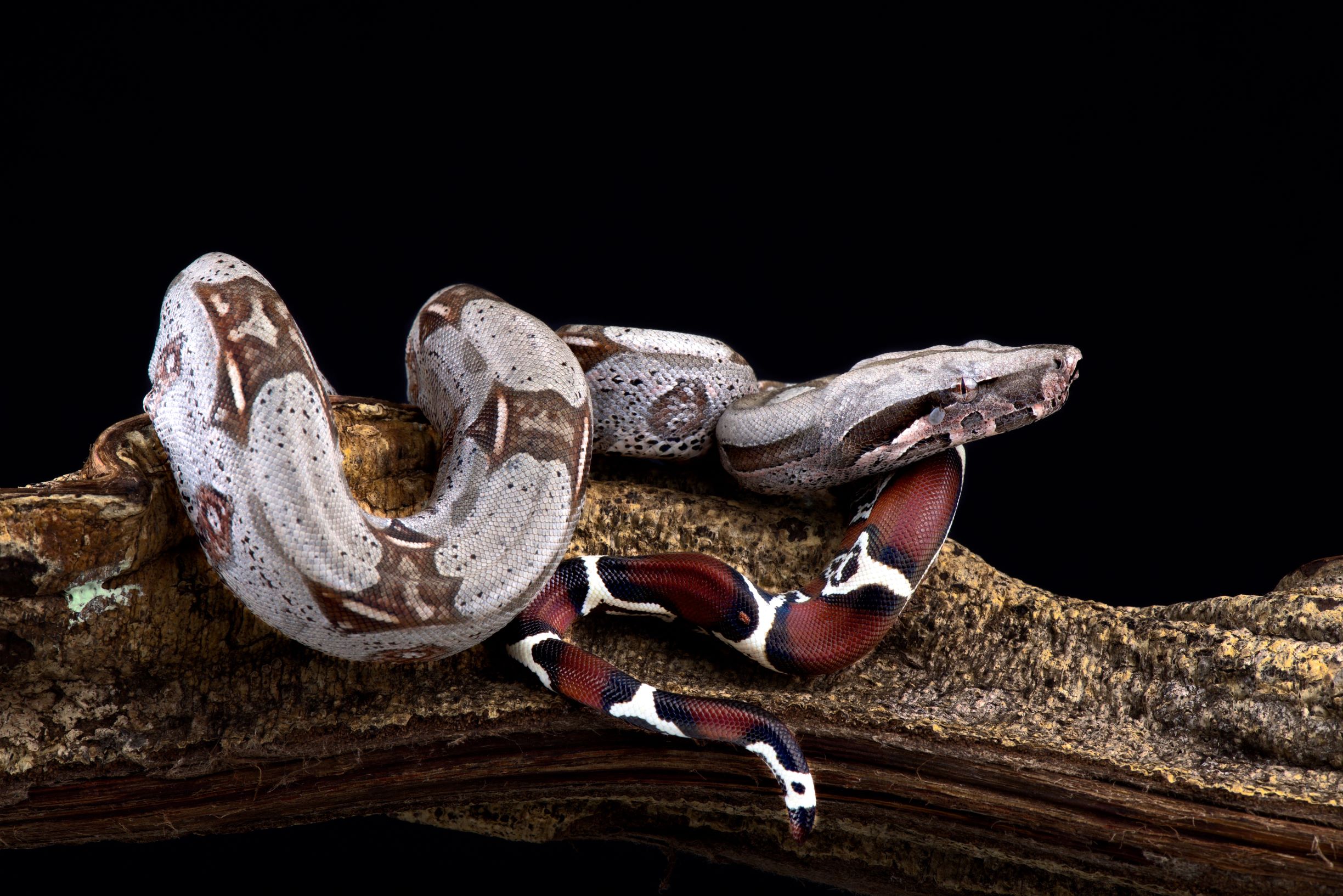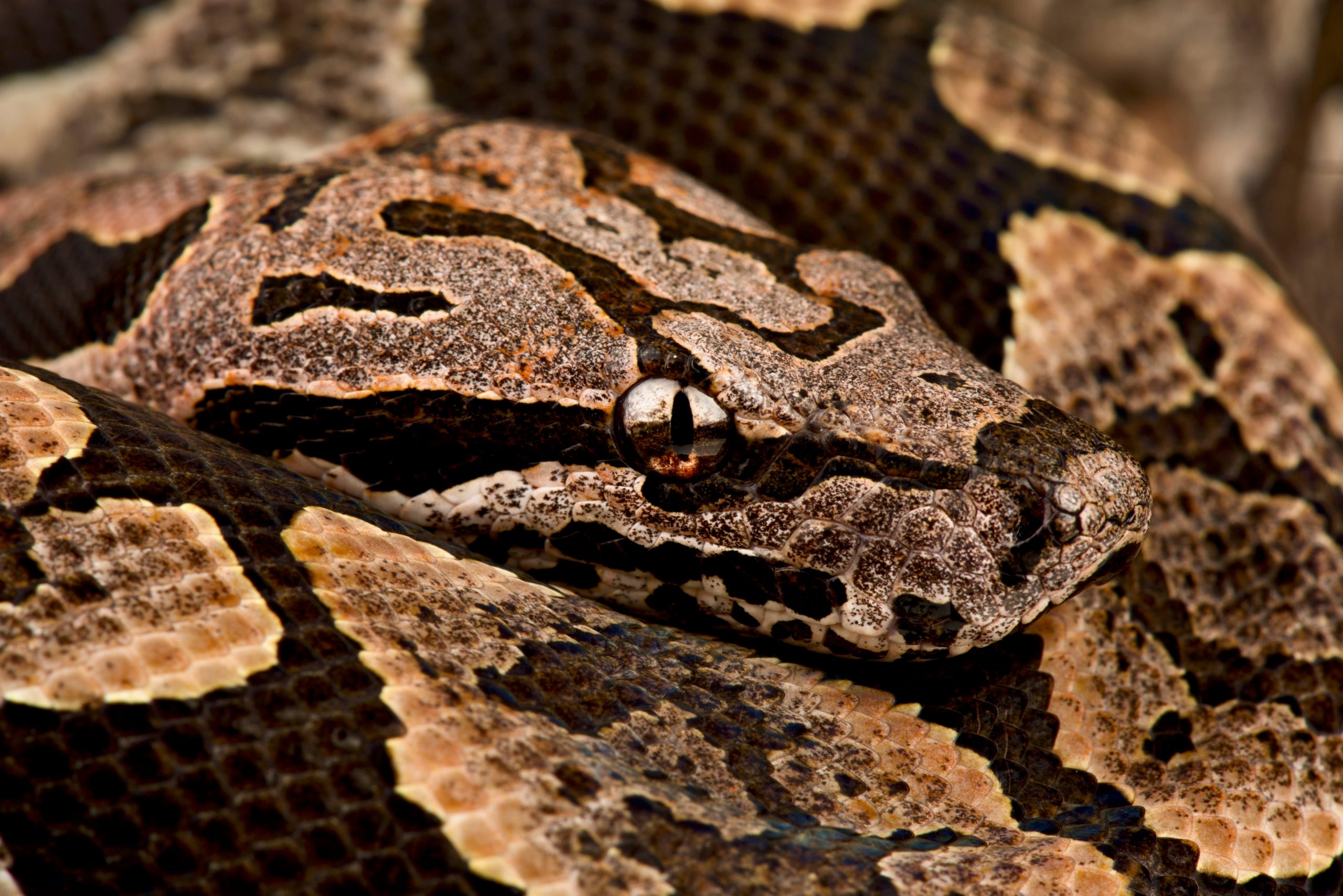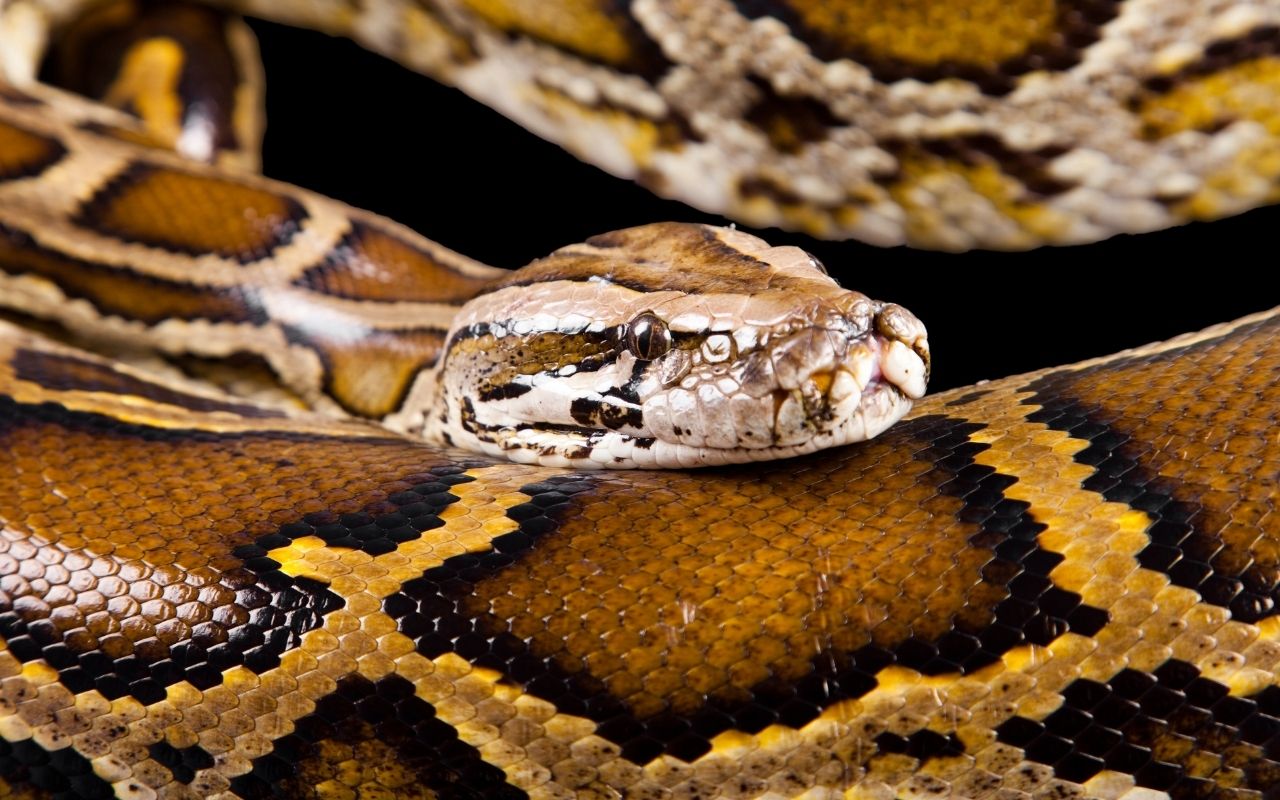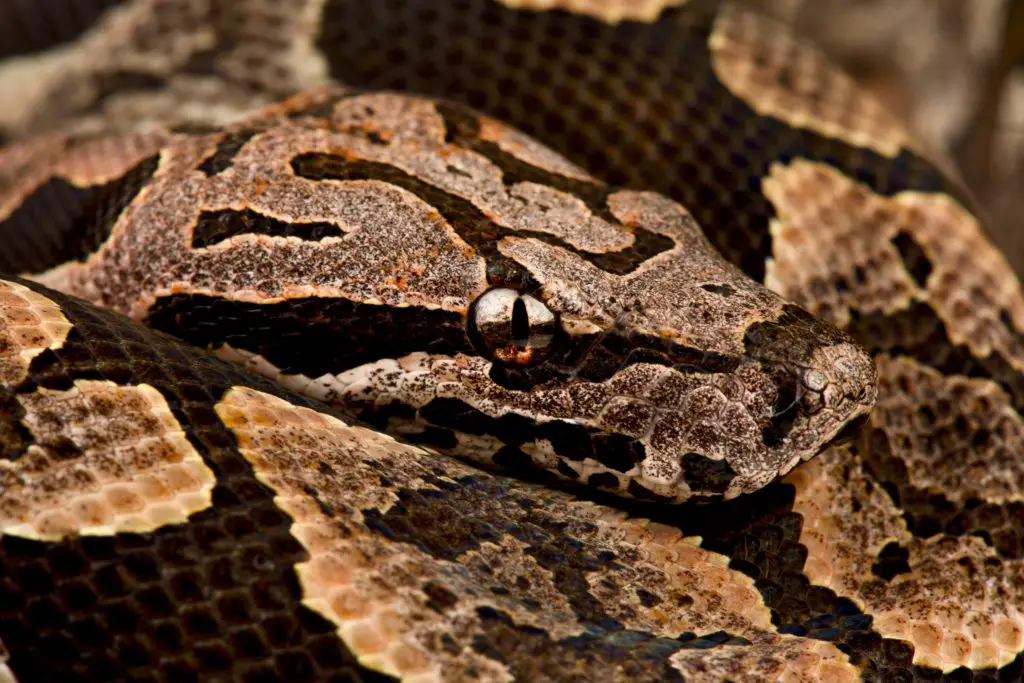Time to look at the best large snakes for pets. If you can get over their size, you be might be surprised at how gentle and easy to keep these species are…
Last updated on February 1st, 2023 at 09:33 am
There are a handful of very large Boas and Pythons that make great pets. Some of these, such as the Dumeril’s Boa are manageable in size, only reaching 6ft (1.8m). Others, like the Reticulated Python, can get huge. You will find each of these species to be hardy, long-lived and generally tame.
My top 5 large snakes for pets
A while back, I did a post on the best small snakes to have as pets. So, in the interest of fairness, it’s about time I did one on the best large pet snakes.
Now, if you like large snakes and large reptiles in general, then I know you’ve already decided that you’re up for the challenge of housing and handling these creatures.
Yes, big reptiles can be expensive to house, and even dangerous if kept (very) incorrectly. The thing is, the species we’re about to discuss can become dog-tame, safe pets to keep if you do your research and care for them right. They are large, but they are definitely worth a look.
The top 5 large snakes included here all have a proven track record as hardy, beautiful pets and include:
- The Red Tail Boa ((Boa constrictor constrictor), or “True” Red Tail Boa
- Dumeril’s Boa (Acrantophis dumerili)
- Blood Python (Python brongersmai)
- Burmese Python (Python bivittatus)
- Reticulated Python (Malayopython reticulatus)
Keep reading to find out more about each of these incredible species. If I had more room, I’d be keeping every single one of them!
1. The Red Tail Boa (Boa constrictor), or “True” Red Tail Boa

The True Red Tail Boa hails from South America, and should not be confused with the Common Boa (Boa imperator), which is cheaper and smaller. True Red Tails are often sold by locality, some of which are exceptionally beautiful.
Guyana Red Tail Boas, for example, often have deep red or mahogany saddles on their tails and posterior third of their body. This colour is offset by a light grey or yellowish background colour across the anterior two-thirds. The result is an absolutely stunning animal.
As far as size goes, Red Tails reach up to 12 ft (3.5m) for females, up to 8ft (2.4m) for males. Often they have a tendency to grow more slowly than Common Boas. They also have a slightly slower metabolism so need to be monitored closely for obesity.
Caring for Red Tails is easy if you have the room. They like to climb when young, but are just as hardy as other Boas, and tend to be very laid back.
Buying a Red Tail is relatively easy these days, as they are regularly bred in captivity and becoming more widely available. The drawback is that they are pricey: true Red Tails often cost $400 to $800, depending on the parents.
As always, avoid wild-caught animals – they often arrive dehydrated and stressed to the limit. It’s not fair on them (or their wild populations).
Follow the link for a full Boa Constrictor husbandry guide.
2. Dumeril’s Boa (Acrantophis dumerili)

This snake is dwarfed by some of the others on the list, but at up to 6ft (1.8m) long, the Dumeril’s Boa still qualifies as ‘large’. I say this because it is a very heavy-bodied snake, and would make a 6ft Rat Snake look like a straw by comparison.
When it comes to availability and price, it’s still tough to get your hands on one of these in many areas. There’s no doubt about it, they are the least widely available on this list. Unsurprisingly, you should expect to a price of at least $450 to $500 for a captive bred neonate.
What makes this a tragedy is that Dumeril’s Boas are exceptionally beautiful. They have an intricate pattern of irregular dark brown shapes, some of which almost form semi-circles, set against a light brown background. On some particularly striking individuals, this background almost takes on a peach colour.
Caring for this species is pretty simple: get their temperature, humidity and enclosure right and the rest falls into place. However, breeding them may be slightly more complicated. Over the years, there have been several reliable reports of females attacking and eating males during breeding.
3. Blood Python (Python brongersmai), also known as Brongersma’s Short Tailed Python

Imagine a 6ft (1.8m) long python, that is as stocky as a 15ft (4.5m) python, and that’s exactly what you get with this species. A healthy Blood Python looks obese, not because they carry an abnormal amount of weight, but because their skeletal anatomy and overall morphology dictates this. They have wide spanning ribs and a wide frame, with a very slightly prominent spine.
Blood Pythons are a particularly bright, orange to red species in the Short Tailed Python group. As with many snakes, they undergo an ontogenetic colour shift, sometimes only getting their handsome colours once fully grown.
If you see one for sale as a hatchling, don’t pass it by just because it doesn’t look particularly colourful yet!
As fully grown adults, Blood Pythons are only fussy about one thing: humidity. You must give them enough humidity, or they won’t thrive. This is because they come from tropical lowland habitat in south-east Asia, from Sumatra to Vietnam.
When it comes to availability, these spectacular snakes are still uncommon, and often pricey. Nonetheless, they are now being captive bred on a regular basis and have become more available than the Dumeril’s Boa, which we discussed earlier.
4. Burmese Python (Python bivittatus)

The first truly giant snake on our list, the Burmese Python is an exceedingly gentle creature with a serious reputation problem. Now famous for being invasive in southern Florida, this species was previously know for being an incredibly docile, if huge pet.
People have kept Burmese Pythons for a long time now. They have simple requirements, asides from the fact that they need very large enclosures and large meals. As you might expect, they also make large messes, and require some major cleaning out every few weeks.
Adults generally reach 8 to 14ft (2.4 to 4.5m) in length, though occasionally a little more. Females are longer and heavier built than males, occasionally reaching 200lbs (90kg) in weight.
At this size, Burms’ are huge, but can still be housed in a ten to twelve foot long enclosure . In all honesty, the many sources that claim these snakes regularly exceed 20ft in length are either exaggerating, or simply misinformed. Whilst it is true that this species has been recorded at this length, specimens of such a size are exceptionally rare.
One thing other than their temperament that makes Burmese Pythons attractive is the many morphs they come in. Albino, Granite, Hypo and Labyrinth in particular are beautiful animals and very popular with hobbyists.
As you might expect, Burmese Pythons are now banned in parts of the US, sometimes at a state level, or even in particular counties. They are widely available and reasonably priced – but it’s best to check local laws before looking into getting one.
If bans concern you, this website recommends contacting USARK, an organisation that lobbies for the rights of reptile keepers.
5. Reticulated Python (Malayopython reticulatus)

Ah the Retic’ – a world famous reptile, renowned for being the longest living snake. Having a beautiful, intricate pattern and relatively high IQ, these snakes are unique captives.
Though most certainly a Python, the Reticulated Python is very different to Asian and African pythons. It’s taxonomical allegiance is probably closer to the Australian pythons like the Scrub Python than it is to the true pythons, such as the Burmese. Admittedly, this is an area of debate, and not one I’m about to join.
What is certain is that Retics’ tend to be longer, more slender and more agile than snakes in the Python genus.
In captivity, they do extremely well. Their care is simple, they are hardy, and have good appetites. The problem is that their strong feeding response can lead to the occasional bite if you don’t use the correct equipment. Also, some of them can be moody.
Nonetheless, most Retics’ do become tame, even gentle animals with time. The only real restriction on keeping them is their size: Captive animals often reach between 8 and 20ft (2.4 and 6m) in length, depending on sex and locality.
Females are larger than males, and mainland varieties are larger than those from islands, often called “dwarf” localities.
If you can provide a ten to twelve ft long enclosure, caring for a Reticulated Python is easy. They are hardy captives that can live for over twenty years.
They also come in a variety of incredible morphs. Some of these are highly unique, even compared to Ball Python morphs.
Some examples include:
- Anthrax
- Titanium
- Tiger
- Platinum
- Albino (including Purple Phase)
- Piebald
- Sunfire
All of these are worth looking up, although some are expensive. Fortunately, normal Reticulated Pythons are widely available at low prices – often under $300.
Quick reference table:
| Species | Size | Temperament |
| Red Tail Boa | up to 12 ft (3.5m) for females, 8ft (2.4m) for males | Docile |
| Dumeril’s Boa | 6ft (1.8m) | Docile |
| Blood Python | 6ft (1.8m), often less | Can be snappy, needs time spent handling to build trust |
| Burmese Python | 8 to 14ft (2.4 to 4.5m) | Very docile |
| Reticulated Python | between 8 and 20ft (2.4 and 6m), depending on sex and locality. | Generally docile |

